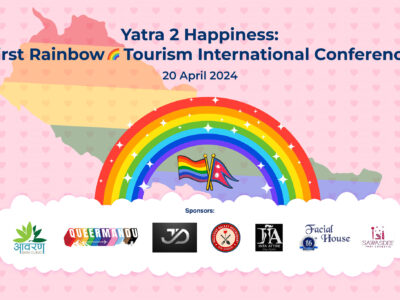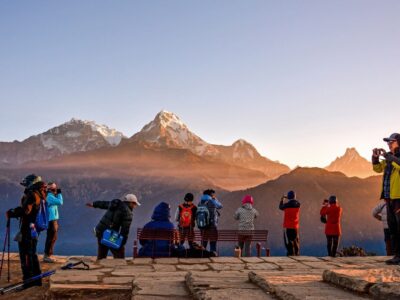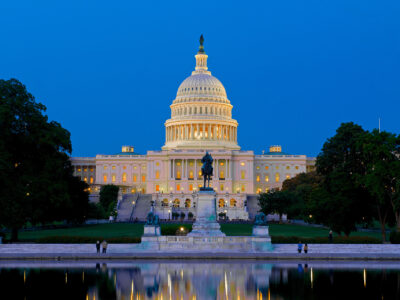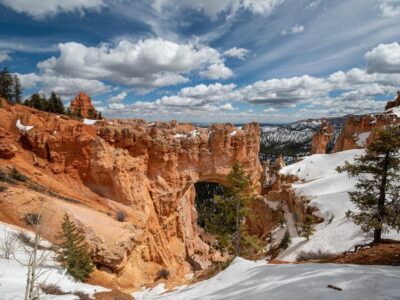
Nepalese architectural heritage can be seen practically anywhere (Photo: India Outbound)
During a winter vacation in our college, we, a group of five friends in Patna, decided to go on an international trip, but were struggling to decide where and how to manage this trip with the limited budgets that each of us had.
Then, all of a sudden we decided on our destination, Nepal. Being just a few hours away from Patna, it had been too obvious but did not strike us earlier. So, we immediately decided on the destination and the next day we set out on a four-day road trip to Nepal.
An international trip had always been a dream for me and an unexpected and hurriedly-organised one with close friends was the best way to realise my dream. I was especially happy as my bucket list for things to do on a vacation included paragliding, a long road trip, and mountain driving and on this one trip, I managed to accomplish all of these.
We had a challenging mission ahead of us because we only had four days to travel from Patna to Sonepur, Pokhara, and Manakamana Temple in Nepal. In the month of December, along with my friends, I set out from Patna on our expedition. As the distance was 230 km and we wanted to spend the maximum time possible in Nepal, we set out early in the morning at 2 am. As it was peak winter, there was dense fog all around us. We drove through Sitamarhi and reached the Nepal border at Sonbarsha.
We were all enjoying the drive despite the tough driving conditions and the chilly weather. At around 4 am we came across a small roadside tea-shop and stopped for nice hot cups of tea. We sat by the fire, sipping almost boiling tea and munching on the cookies that the shopkeeper had brought along with the tea.
Warmed by the fire as much as by the tea, we continued our drive. Thankfully, though the highway, AH2, was in Bihar, it was in considerably much better state than the roads that we encounter in various parts of Bihar. So, we reached the Nepal border around 0630. As it was still dark, there were few vehicles at the border post. So, the security forces checked our documents and our vehicle and waved us on fairly quicky.
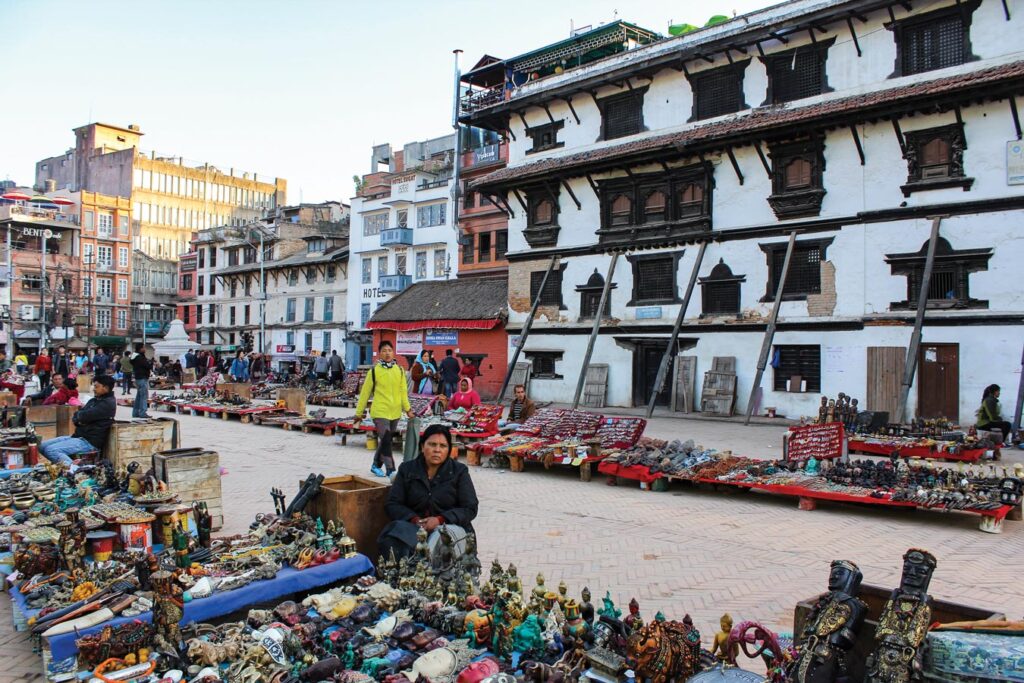
A wide display of Nepalese handicrafts in local markets (Photo: India Outbound)
Onward To Chitwan
Having crossed the border, which is fairly simple for Indian and Nepalese citizens since there is no requirement for visa or any other permit, except a vehicle permit, we continued our drive and headed straight to the Chitwan National Park.
Though we had entered Nepal, the terrain remained pretty much flat, even though the road had begun to gain altitude slowly. We made good time on AH2 in Nepal also and soon, we crossed the magnificent Parsa National Park. By now, the sun was up and we could see the beauty of the National Park with its towering forests and abundant wildlife.
Also Read – Nepal: An Adventurer’s Paradise.
India key to revival of tourism in Nepal: NTB.
After just over an hour’s drive, we stopped again for a shortwhile as we were famished. So we came across another roadside eatery at Hetauda that was well-known for its excellent non-vegetarian fare, especially, Dehati Chicken. As we had not eaten anything, we were all famished and ordered a plate each of Dehati Chicken curry with rice. Being a rare dish, it was rather pricey, at about INR 900 per head. Having settled the bill, we were all ready to travel to Chitwan National Park.
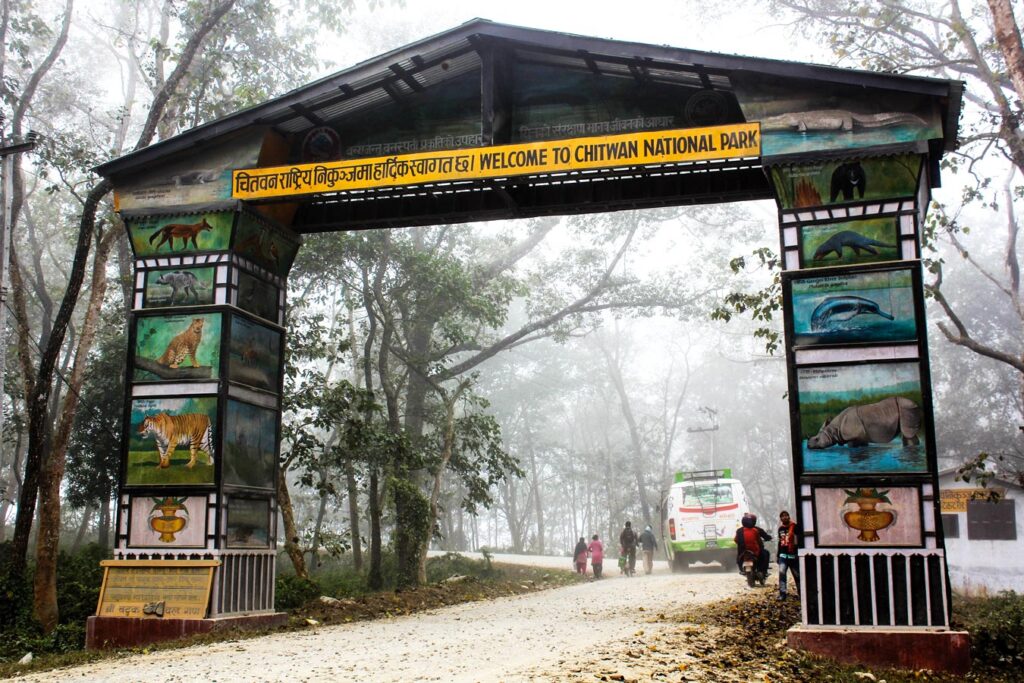
Chitwan National Park is home to the endangered Gangetic crocodiles or Muggers (Photo: India Outbound)
Chitwan National Park
Driving fairly rapidly, we reached Chitwan National Park by around noon. Situated in the southern-central Terai region of Nepal, the National Park is famous for being home to the largest population of single-horned Asiatic Rhinos and also for the largest refugee population of Bengal Tigers.
We parked the car at the entrance and booked a jungle safari that cost us INR 1000 per person, which is a discounted rate for citizens of Southern Asian or SAARC countries. Visitors from other countries had to pay INR 2000 each.
Before the safari began, we had to cross a river, Narayani, within the National Park, so we got into a small boat which could accommodate no more than 12 people. As we were crossing the river, shudders went down our spines collectively as it seemed that there were more crocodiles than there was water in the river.
Along the banks of the river, as the sun shone brightly, it seemed hundreds of crocodiles and alligators were dozing off, while warming themselves in the sun. It remains one of the most thrilling river crossings that I have ever had. It is important to note that the Chitwan National Park is home to the endangered Gangetic crocodiles or Muggers.
We turned out to be really lucky on our first safari itself as we saw crocodiles, the single-horned rhinoceros, a 20-foot long python, and swamp deer. So, except for the Royal Bengal Tigers and the elephants, we had spotted all the highlights of the National Park. After the safari, we had our lunch within the park and by late afternoon we left the Park to head to our next destination, Pokhara, located about 150 km away.
The drive to Pokhara was very adventurous and quite difficult as the road had begun to climb fairly steeply. Since, we were tired of driving since early in the morning, so we halted for the night after driving for about 100 km. We stopped at in Byas, a small village on the H04 highway. In another small, roadside restaurant-cum-hotel we were welcomed by a local family in the traditional way and they served us a traditional meal, the thali that cost just about INR 250 per head. The very warm and admirable hospitality of the owner of the eatery left a distinct impression on my mind.
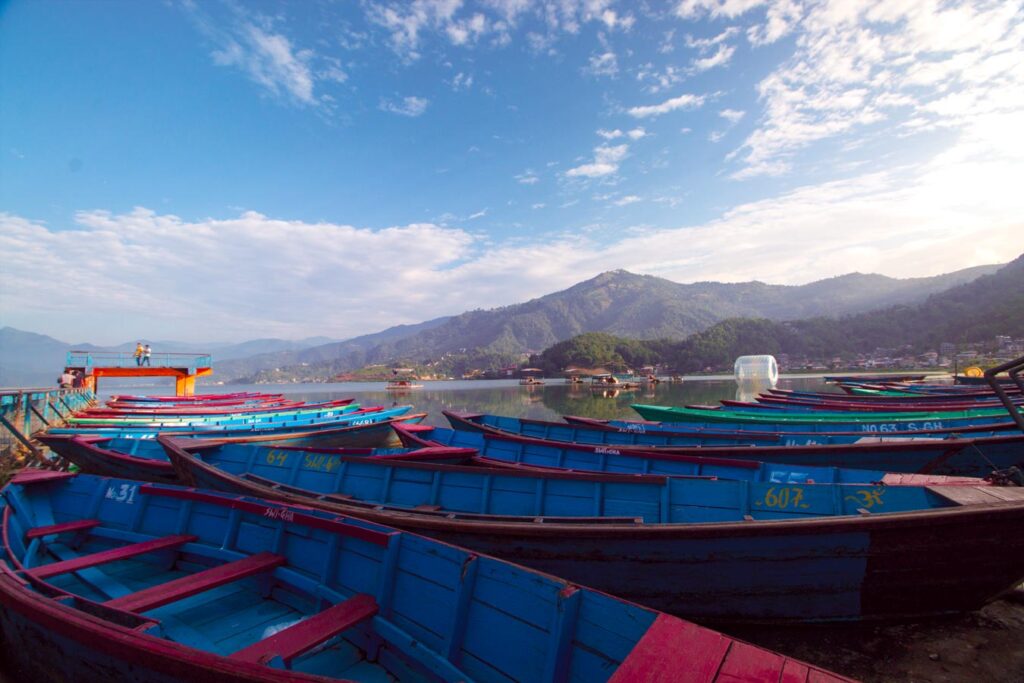
Pokhara lake offers magnificent views of Himalayas (Photo: India Outbound)
Pokhara
The next morning, after a hearty breakfast, we resumed our journey to Pokhara at 10 am. Immediately upon arrival here, we headed straight towards Sarangkot to tick off another item on my bucket list, paragliding. Though Sarangkot is only 30 minutes away from Pokhara city, the roads were very tricky, albeit with stunning views of the Himalayas. The sight of colourful parachutes soaring high in the sky caught my attention. The cost of a 30-minute paragliding flight is INR 4,000, and the view from the top is absolutely breath-taking. A number of the Himalayan ranges were seen, including the Tibetan mountain range. Paragliding was the best experience that I ever had.
It was thrilling and we experienced true freedom. When we took off and began gliding, it was simple for me to forget about all of my anxieties, fears and tensions.
From Sarangkot, we drove to Gupteshwar Gupha and the adjoining Devi’s Fall. Said to be dating back to the 16th century and dedicated to Lord Shiva, Gupteshwar Mahadev Cave temple is located where Seti River emerges above ground. The cave is nearly 3 km long and it is said that a Shiva Lingam is still in the same condition that it was found in.
Right next to the temple is another spot that is an absolute must for tourists. The Devi’s Fall or Patal ko Chango (The Netherworld’s Waterfall) is an impressive experience, especially the roar it makes when the water falls on the rocks below. Once at the bottom, it enters a tunnel that is about 150 metre long and runs 30 metre below ground level. A beautiful, though small, garden has been created outside, with several viewpoints where the tourists can not only enjoy the sight from, but also take photographs. Visitors can also buy Nepalese handcrafts and artisanal products from a small market outside the garden.
We spent the evening at Pokhara, which has a lengthy strip of stores, bars, bakeries, and restaurants. The city was immaculately organised and tidy, and the night-time view was unmatched. We spent the night in Pokhara, and the morning panorama of dazzling snowcapped mountains from the balcony of our hotel was breath-taking.
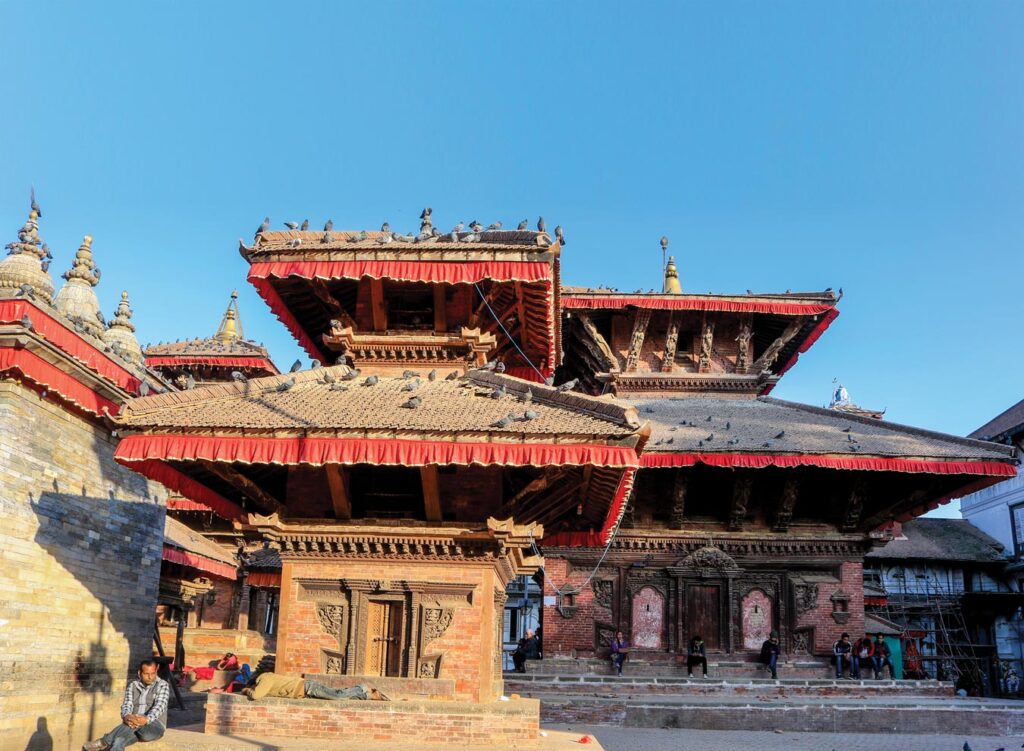
Nepal has hundreds of beautiful temples (Photo: India Outbound)
Manakamana Temple
There are two methods to get to Manakamana Temple, one is via cable car, and the other is by road. To experience some adventure, we chose to travel via the challenging section of the route. Since Indian SIM cards do not function in Nepal, we had to constantly connect to WiFi on our phones to keep consulting the map to get to the temple. We travelled for a few miles before coming to a river crossing where there was no bridge. There were numerous waterfalls and really spooky mountain roads. We had the impression that we were on top of the sky as clouds caressed the mountains. That route was impassable, so we turned around and took the cable car to go to the temple, which is the most well-known shrine to Goddess Durga in Nepal. At 1302 metres above sea level, it is located on a hill in Gorkha district. We went there, participated in prayer, and had breakfast. Orange trees could be seen everywhere, and the surroundings were pleasant.
At 4 pm, we went back down the hill and started getting ready to drive back to India. Manakamana Temple was 460 kilometres away from Patna. We recommenced our arduous journey at 6 pm and reached the Nepal-India border at 11 pm. Though we were tired, we had a great time travelling and frequently stopped to take pictures of Nepal’s breath-taking Himalayan scenery.
Also Read – One Rep Global to represent Nepal’s Dwarika’s Hotels in India.
Interview with Mohammad Sarhan, Emirates Airlines VP – India & Nepal.
We arrived in Sitamarhi after passing through security checks and formalities. Once more, we had internet access on our phones, but the temperature was uncomfortably low and there was thick fog everywhere. We were tired, but instead of stopping, drove carefully and reached back home, bringing to the end a journey which had so many firsts for me that I can never ever forget it and even to this day I get goosebumps thinking of the exhilarating experience that it had been for me.









